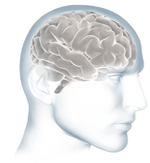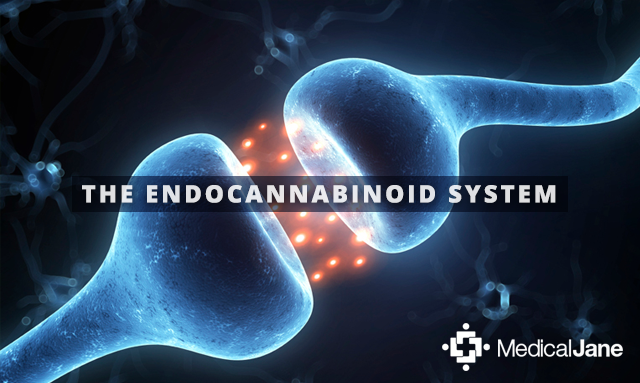Medical Marijuana Education
the ultimate beginner's guide for medical marijuana patients & caregivers
Getting Started with Medical Marijuana
 Modern research suggests that cannabis is a valuable aid in the treatment of a wide range of clinical applications. These include pain relief — particularly neuropathic pain — nausea, spasticity, glaucoma, and movement disorders. Marijuana is also a powerful appetite stimulant, specifically for patients suffering from HIV, the AIDS wasting syndrome, or dementia. Emerging research suggests that cannabinoids and terpenes found in cannabis work together synergistically to help protect the body against some types of malignant tumors.
Modern research suggests that cannabis is a valuable aid in the treatment of a wide range of clinical applications. These include pain relief — particularly neuropathic pain — nausea, spasticity, glaucoma, and movement disorders. Marijuana is also a powerful appetite stimulant, specifically for patients suffering from HIV, the AIDS wasting syndrome, or dementia. Emerging research suggests that cannabinoids and terpenes found in cannabis work together synergistically to help protect the body against some types of malignant tumors.
Currently, more than 60 U.S. and international health organizations — including the American Public Health Association, Health Canada and the Federation of American Scientists — support granting patients immediate legal access to medicinal marijuana under a physician’s supervision. Several others, including the American Cancer Society and the American Medical Association support the facilitation of wide-scale, clinical research trials so that physicians may better assess cannabis’ medical potential.
In addition, a 1991 Harvard study found that 44 percent of oncologists had previously advised marijuana therapy to their patients. Fifty percent responded they would do so if marijuana was legal. A more recent national survey performed by researchers at Providence Rhode Island Hospital found that nearly half of physicians with opinions supported legalizing medical marijuana.
Safety and Efficacy
Cannabis and its psychoactive cannabinoid, THC, are considered incredibly safe for human consumption. The Drug Awareness Warning Network Annual Report, published by the Substance Abuse and Mental Health Services Administration (SAMHSA), contains a statistical compilation of all drug deaths which occur in the United States. According to this report, there has never been a death recorded from the use of cannabis. In fact, many studies show it is physically impossible for a human to die from a cannabis overdose.
The documented use of cannabis as a safe and effective therapeutic botanical dates to 2700 BC. Between 1840 and 1900, European and American journals of medicine published more than 100 articles on the therapeutic use of cannabis. In fact, cannabis was part of the American pharmacopoeia until 1942, and is currently available by prescription in Canada, the Netherlands, Israel, and Germany.
Therapeutic Benefits
The cannabis plant has been around for centuries. It is believed to have originated in Central Asia, but has expanded its reach to an international scale over time. People all around the globe consume cannabis and their reasoning is largely the same: it makes them feel better.
We know that humans have cannabinoid receptors housed inside the body that are ready to bind with cannabinoids found in the cannabis plant to provide therapeutic benefits for a variety of ailments. In fact, cannabinoid receptors are present in humans before birth and the compounds themselves are even found in a mother’s breast milk. Medical cannabis gains merit when you consider our bodies are naturally tuned to interact with cannabinoids, and even more so when you acknowledge the growing evidence of benefits to cannabis consumption.
Cannabis & Digestion
 It is no secret – experiencing “the munchies” is one of the most obvious cannabis clichés. Despite the silly connotation, studies suggest that the endocannabinoid system actually helps modulate appetite. This is especially interesting for the treatment of eating disorders. In fact, a study published in the International Journal of Eating Disorders suggests that cannabinoids may prove effective in treating anorexia.
It is no secret – experiencing “the munchies” is one of the most obvious cannabis clichés. Despite the silly connotation, studies suggest that the endocannabinoid system actually helps modulate appetite. This is especially interesting for the treatment of eating disorders. In fact, a study published in the International Journal of Eating Disorders suggests that cannabinoids may prove effective in treating anorexia.
Cannabis is also famously used to reduce the feelings of nausea but studies suggest it could have a number of digestive benefits as well. Medical marijuana could play a role in a number of digestion-related health conditions including:
Medical Marijuana For Pain Management
 Chronic Pain is one of the most common ailments for which doctors prescribe medical marijuana and a recent survey published in The Spine Journal found that 1 out of 5 patients at a Colorado spine center were using cannabis to manage their pain. Of those, nearly 90% said it greatly or moderately relieved their pain.
Chronic Pain is one of the most common ailments for which doctors prescribe medical marijuana and a recent survey published in The Spine Journal found that 1 out of 5 patients at a Colorado spine center were using cannabis to manage their pain. Of those, nearly 90% said it greatly or moderately relieved their pain.
The spine clinic study was merely a survey, which means more research will be necessary on the potential role of cannabis in treating back pain. With that said, plenty of people will tell you it helps manage pain and science is beginning to back their claims. Studies suggest medical marijuana could offer relief for various types of pain, including the following:
Cannabis & Mental Health
 A common misconception of cannabis is that has detrimental effects on mental health. It is possible that high doses of tetrahydrocannabinol (THC) could trigger anxiety in some patients, and some believe it could expedite the onset of predisposed personality disorders, but this has yet to be proven by any reputable studies.
A common misconception of cannabis is that has detrimental effects on mental health. It is possible that high doses of tetrahydrocannabinol (THC) could trigger anxiety in some patients, and some believe it could expedite the onset of predisposed personality disorders, but this has yet to be proven by any reputable studies.
The recent trend in the mental health field has been to investigate our relationship with cannabis. In turn, studies have linked cannabinoids to a number of mental health concerns. The research catalog is still growing, but a few mental health conditions for which cannabis could be beneficial are as follows:
- Alcoholism and Cannabis
- Opiate Withdrawal and Cannabis
- Depression and Cannabis
- Phobias and Cannabis
- Schizophrenia and Cannabis
Your Brain On Cannabis
 Not only has cannabis been linked to mental health, cannabinoid receptor activity in the brain before birth suggests that the compounds could be play a role in brain development. Cannabis has been linked to the creation of new neurons in the brain, or neurogenesis, and overall brain plasticity. In addition to its role in brain development, medical cannabis is believed to have neuroprotective properties that help treat the following conditions:
Not only has cannabis been linked to mental health, cannabinoid receptor activity in the brain before birth suggests that the compounds could be play a role in brain development. Cannabis has been linked to the creation of new neurons in the brain, or neurogenesis, and overall brain plasticity. In addition to its role in brain development, medical cannabis is believed to have neuroprotective properties that help treat the following conditions:
- Alzheimer’s Disease and Cannabis
- Parkinson’s Disease and Cannabis
- Oxygen Deficits and Cannabis
- Migraines and Cannabis
Medical Marijuana For Cancer
 One the most intriguing potential applications for medical marijuana is cancer treatment. It has long been prescribed to counter the side effects of chemotherapy, but oncologists across the world are working on trials to determine whether cannabis can be used to treat cancer itself. Many patients choose to take the Rick Simpson Oil treatment plan in an attempt to cure the cancer, but there are many different methods of going about treatment.
One the most intriguing potential applications for medical marijuana is cancer treatment. It has long been prescribed to counter the side effects of chemotherapy, but oncologists across the world are working on trials to determine whether cannabis can be used to treat cancer itself. Many patients choose to take the Rick Simpson Oil treatment plan in an attempt to cure the cancer, but there are many different methods of going about treatment.
Past research showed promise for THC in cancer treatment, but many are skeptical of using THC-based products because of its psychotropic effects (eg. the “high”). As a result many oncologists have redirected their focus toward cannabidiol (CBD) and cannabigerol (CBG). A recent British study, however suggests that cannabinoids may be most effective against cancer when combined in a manner that allows them to act synergistically with one-another. Below is a short list of studies and research supporting cancer treatment with medical cannabis to get you started:
- Breast Cancer and Cannabis
- Brain Cancer and Cannabis
- Lung Cancer and Cannabis
- Skin Cancer and Cannabis
- Tumor Growth and Cannabis
Becoming a Patient
There are just four basic steps to becoming a legal medical marijuana patient in your state:
-
Proof of residence
- This is most easily proven with a valid driver’s license.
-
Eligible condition
- The list of eligible health conditions for access to medical marijuana varies from state to state. Many conditions, such as cancer, glaucoma, HIV / AIDS, neuropathic pain, arthritis, and other such severe and debilitating or terminal illnesses qualify in most states.
-
Knowledge of your local laws
- Medical cannabis patients and their providers are vulnerable to federal and state raids, arrest, prosecution, and incarceration. As a result, these individuals may suffer pervasive discrimination in employment, child custody, housing, public accommodation, education, and medical care. Laws protecting patients and their providers vary from state to state and, in some cases, may vary from county to county.
-
Consent from a physician or other qualifying medical professional
- It is best to work with your primary care physician, but if they are reluctant or you don’t have one, you can find a list of doctors familiar with medical cannabis on NORML’s Website.


